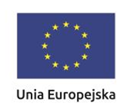PHARMA
The process of launching new medicinal substances to the market by selecting the appropriate chemical structures, their synthesis, toxicity and efficacy tests can be extremely time consuming and expensive. Chemoinformatic tools supporting the process of producing a safe and effective drug are gaining more and more popularity.
The opportunities presented by modern computational chemistry include simulations of the therapeutic effectiveness of the chemical together with suggestions for modification of structures to enhance the therapeutic effect. In addition, molecules of interest can be evaluated at the design stage for safety and potential adverse effects in accordance with the guidelines of The International Council for Harmonisation of Technical Requirements for Pharmaceuticals for Human Use, ICH.
The assessment of the efficacy and safety of the substances under consideration based on reliable computer tools without the need to synthesize these compounds has led to a significant acceleration in the research and development stage of new medicinal products, and a consequent reduction in the total cost of getting the product to market.
The (Q) SAR methodology allows us to assess the genotoxic potential of active compounds based on the determination of compound alert structures.
- molecular docking and molecular dynamics experiments
- virtual screening supported by machine learning
- de novo design of compounds for a given biological task
- optimization of leading structures - QSAR methods
- computer design of chemical compounds
- computer toxicity assessment
- assessment of the genotoxic potential of an active compound using the (Q)SAR methodology
Products offered in the medical device sector are subject to various biocompatibility standards depending on the intended use and complexity of the device.
The legal provisions in force when introducing new chemical substances, preparations and medical devices (e.g. implants and prostheses) to the market require a safety assessment, including toxicological evaluation.
We perform a wide range of laboratory tests to ensure the quality and safety of medical devices in accordance with the relevant standards.
We make predictions for such endpoints as:
Physico-chemical properties
| REACH | Endpoint | TEST |
|---|---|---|
| 7.2 | Melting/freezing point | OECD 102 |
| 7.3 | Boiling point | OECD 103 |
| 7.4 | Relative density | OECD 109 |
| 7.5 | Vapour pressure | OECD 104 |
| 7.6 | Surface tension | OECD 115 |
| 7.7 | Water solubility | OECD 105 |
| 7.8 | Partition coefficient n-octanol/water | OECD 107, 117, 123 |
| 7.9 | Flash-point | EU A.9 |
| 7.10 | Flammability | EU A.10, EU A.12, EU A.13 |
| 7.11 | Explosive properties | EU A.14 |
| 7.12 | Self-ignition temperature | EU A.15 |
| 7.13 | Oxidising properties | EU A.17 |
| 7.14 | Granulometry | |
| 7.15 | Stability in organic solvents and identity of relevant degradation products | |
| 7.16 | Dissociation constant | OECD 112 |
| 7.17 | Viscosity | OECD 114 |
Toxicity
| REACH | Endpoint | TEST |
|---|---|---|
| 8.1 | Skin irritation or skin corrosion | OECD 439, 430, 431, 435, EU B.40, EU B.40 bis |
| 8.1.1 | In vivo skin irritation | OECD 439, 430, 431, 435 |
| 8.2 | Eye irritation | EU B.47, OECD 437, EU B.48, OECD 438, OECD 460, OECD 491, OECD 492 |
| 8.2.1 | In vivo eye irritation | OECD 405 |
| 8.3 | Skin sensitisation | OECD 429, 406, 442A, 442B, 442C, 442D, 442E, |
| 8.4 | Mutagenicity | OECD 473 |
| 8.4.1 | In vitro gene mutation study in bacteria | OECD 471 |
| 8.4.2 | In vitro cytogenicity study in mammalian cells or in vitro micronucleus study | OECD 487 |
| 8.4.3 | In vitro gene mutation study in mammalian cells | OECD 490 |
| 8.5 | Acute toxicity | |
| 8.5.1 | By oral route | OECD 420, 423, 425 |
| 8.5.2 | Acute toxicity By inhalation | OECD 403, 433, 436 |
| 8.5.3 | Acute toxicity By dermal route | OECD 402 |
| 8.6 | Repeated dose toxicity | |
| 8.6.1 | Short-term repeated dose toxicity study (28 days), one species, male and female, most appropriate route of administration, having regard to the likely route of human exposure. | OECD 422 |
| 8.6.2 | Sub-chronic toxicity study (90- day), one species, rodent, male and female, most appropriate route of administration, having regard to the likely route of human exposure. | |
| 8.7 | Reproductive toxicity | |
| 8.7.1 | Screening for reproductive/developmental toxicity, one species | OECD 421, 422 |
| 8.7.2 | Pre-natal developmental toxicity study, one species, most appropriate route of administration, having regard to the likely route of human exposure | OECD 414 |
| 8.7.3 | Two-generation reproductive toxicity study, one species, male and female, most appropriate route of administration, having regard to the likely route of human exposure | OECD 416 |
| 8.9.1 | Carcinogenicity study | OECD 451, 453 |
Ecotoxicity
| REACH | Endpoint | TEST |
|---|---|---|
| 9.1 | Aquatic toxicity | |
| 9.1.1 | Short-term toxicity testing on invertebrates (preferred species Daphnia) | OECD 202 |
| 9.1.2 | Growth inhibition study aquatic plants (algae preferred) | OECD 201, 221 |
| 9.1.3 | Short-term toxicity testing on fish: the registrant may consider long-term toxicity testing instead of short- term. | OECD 203, OECD 236, OECD 210 |
| 9.1.4 | Activated sludge respiration inhibition testing | OECD 209 |
| 9.1.5 | Long-term toxicity testing on invertebrates (preferred species Daphnia) | OECD Guideline 211/ EU Method C.20 |
| 9.1.6 | Long-term toxicity testing on fish | |
| 9.1.6.1 | Fish early-life stage (FELS) toxicity test | OECD TG 210 |
| 9.1.6.2 | Fish short-term toxicity test on embryo and sac-fry stages | OECD 212 |
| 9.1.6.3 | Fish, juvenile growth test | OECD 215 |
| 9.2.1 | Degradation (biotic) | |
| 9.2.1.1 | Ready biodegradability | OECD 301 |
| 9.2.1.2 | Simulation testing on ultimate degradation in surface water | OECD 309 |
| 9.2.1.3 | Soil simulation testing | OECD 307 |
| 9.2.1.4 | Sediment simulation testing | OECD 308 |
| 9.2.2.1 | Hydrolysis as a function of pH | OECD 111 |
| 9.2.3 | Identification of degradation products | |
| 9.3.1 | Adsorption/desorption screening | OECD 106, OECD 121 |
| 9.3.2 | Bioaccumulation in aquatic species, preferably fish | OECD 305 |
| 9.4 | Effects on terrestrial organisms | |
| 9.4.1 | Short-term toxicity to invertebrates | OECD 214 |
| 9.4.2 | Effects on soil micro-organisms | |
| 9.4.3 | Short-term toxicity to plants | |
| 9.4.4 | Long-term toxicity testing on invertebrates | |
| 9.4.6 | Long-term toxicity testing on plants | |
| 9.5.1 | Long-term toxicity to sediment organisms | |
| 9.6.1 | Long-term or reproductive toxicity to birds |

